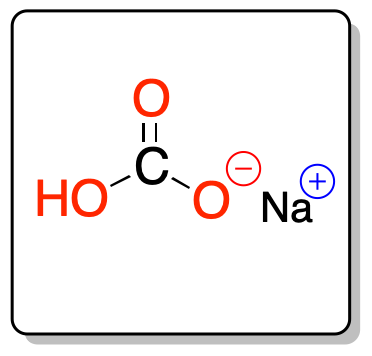Written by J.A Dobado | Last Updated on April 22, 2024
What is sodium bicarbonate?
Sodium bicarbonate, formula NaHCO3, is a white crystalline solid soluble in water.

It is also known by other synonyms: sodium hydrogen carbonate or bicarbonate of soda. It has a slightly alkaline taste similar to sodium carbonate, although less strong and more salty.
Production of Sodium Bicarbonate
It is found in nature as the mineral nahcolite, or it can be produced artificially by the Solvay process.
By means of the Solvay method, which although used to obtain sodium carbonate Na2CO3, in one of the intermediate reactions NaHCO3 can be generated by precipitation, from sodium chloride, CO2 and ammonia in water.
NaCl + CO2 + NH3 + H2O → NH4Cl + NaHCO3(s) ↓↓
Physicochemical properties and uses
Sodium bicarbonate in the presence of a moderately strong acid decomposes into carbon dioxide, CO2, and water producing a characteristic effervescence.
NaHCO3 + CH3COOH → CH3COONa + H2O + CO2 (g) ↑↑
The main physicochemical properties of NaHCO3 are as follows: molar mass of 84 g·mol-1, density of 2.173 g·cm-3, melting point of 50 ºC, and decomposes at 270 ºC, with a refractive index (nD) of 1.3344.
Due to this effervescence, which releases CO2, it is used together with acidic compounds as a gasifying agent in bakery products, and also for the preparation of carbonated soft drinks.
In addition, sodium bicarbonate is used as a key component of fire extinguishing powders or BC powder.